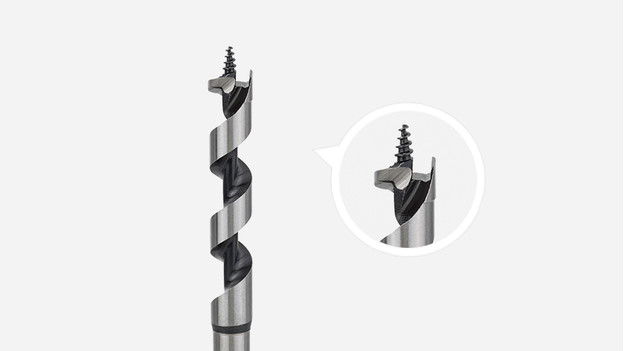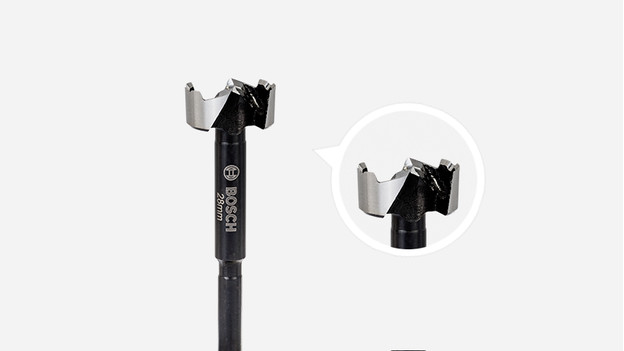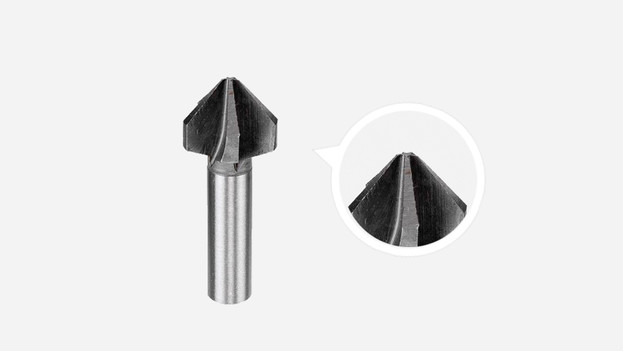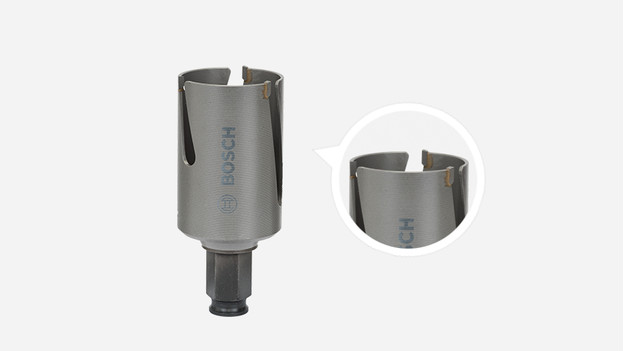
What type of wood drill bit should you use for what job?
Choose wood drill bit
There are several wood drill bits that you use for a particular job:
- Snake drill bit: drill deep holes.
- Forstner drill bit: drill shallow, round holes with a flat bottom.
- Spade drill bit: quickly drill a deep hole.
- Countersink bit: making screws in wood 'disappear'.
- Hole saw: drill large holes in thin sheet material.
Snake drill bit

This spiral-shaped drill has a carver and a sharp centering point, which helps you put it into the wood at exactly the right spot. The spiral around the drill ensures the wood chips are removed and you can make a smooth drill hole. Drill at a low speed to make sure the drill goes through the wood calmly. A snake drill is suitable for making deep holes. That's why you use this type of drill for thick wooden beams, for example.
Forstner drill

With a Forstner drill bit, you can make shallow and round holes with flat bottoms in soft types of wood. You can make hinge holes in kitchen cabinets with this type of wood drill bit, for example. A Forstner drill bit is also a good idea for decorative jobs. Think of wooden toys or an original tealight holder. The best result with a Forstner drill bit (also known as a hinge hole drill bit or cylinder drill bit) is obtained by drilling at a high speed and putting a lot of pressure on the drill.
Spade drill bit

Quickly want to drill a deep hole? Get yourself a spade drill bit. You can use this wood drill bit (also known as a butterfly bit) to drill large holes in wood or plate materials. You can drill until the tip of the drill bit sticks out from the other side and then move the drill to the other side to fully drill the hole. Make sure you always drill straight down. You'll splinter the wood if you drill at an angle. A spade drill bit is useful for drilling feed holes for pipes or cables.
Countersink drill bit

If you're making a bench or a dining table, you don't want the screws to stick out. It look worse, but it's dangerous as well. Countersink drill bits were created for that exact reason. You can use them to modify a previously made drill hole and make sure the flat head of a screw can disappear or sink into the material. The screw hides right underneath the surface of the wood this way. You can then paint or varnish your piece of furniture. If you take these steps, you won't see the screws at all.
Hole saw

The edge of the hole saw has small teeth (like a saw), and you secure the axis in the middle of the drill chuck of your drill. A hole saw allows you to drill large holes into thin plate material. Always drill at a low speed and with a high torque when using a hole saw. This ensures the circle-shaped hole drill works its way into the wood very controlled. Hole saws come in several diameters. Use this type of drill to make a hole in your counter for water or gas pipes, for example.


